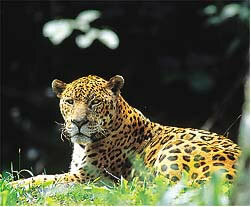When the Portuguese were in Brazil, their main objective was to explore the natural resources existing in the interior of the country. Based on this statement, the lack of interest in populating the new territory is clear. This favored the non-emergence of relevant urban centers (cities), with the exception of some towns and cities of small size that emerged on the northeast coast of Brazil, in addition to all agricultural production that was formed in the around.
In the 16th century, the main Brazilian product was the sugar, a fact that favored the occupation only of the country's coastline, since the flow of production took place through the Atlantic Ocean. With the cultivation of sugar cane, it was necessary to expand agricultural frontiers. In view of the fact, polycultures were cultivated in more interior areas to give way to monoculture production.
One hundred years later, between the 17th and 13th centuries, there was the period called gold, in which the caravans turned to the interior of Brazil in search of precious stones, such as gold and diamonds. At that time, territories that today correspond to the states of Goiás, Mato Grosso and Minas Gerais were opened up. The cities that emerged because of mineral extraction promoted a certain agglomeration, however, soon after the minerals ran out, these cities were practically deserted.
Do not stop now... There's more after the advertising ;)
A century later, after government initiatives to occupy the area and prevent it from being invaded by one of the neighboring countries, the southern region was populated by immigrants. In the 19th century, the product of great expression for the country stopped being sugar cane and became the coffee, a fact that provided the settlement of the state of São Paulo and the north of Paraná. With the decline of coffee, the capital generated by the product migrated to industrial production, especially in the Southeast region. From then on, there was a high development of the railways. Later, with the installation of the automobile industry, highways were built, further favoring the population of the country.
These were the main moments of Brazilian urbanization, although the historical facts presented were synthesized with the aim of dynamizing the geo-historical study of Brazil.
By Eduardo de Freitas
Graduated in Geography
Would you like to reference this text in a school or academic work? Look:
FREITAS, Eduardo de. "Brazilian settlement process"; Brazil School. Available in: https://brasilescola.uol.com.br/brasil/o-processo-povoamento-brasileiro.htm. Accessed on June 27, 2021.


